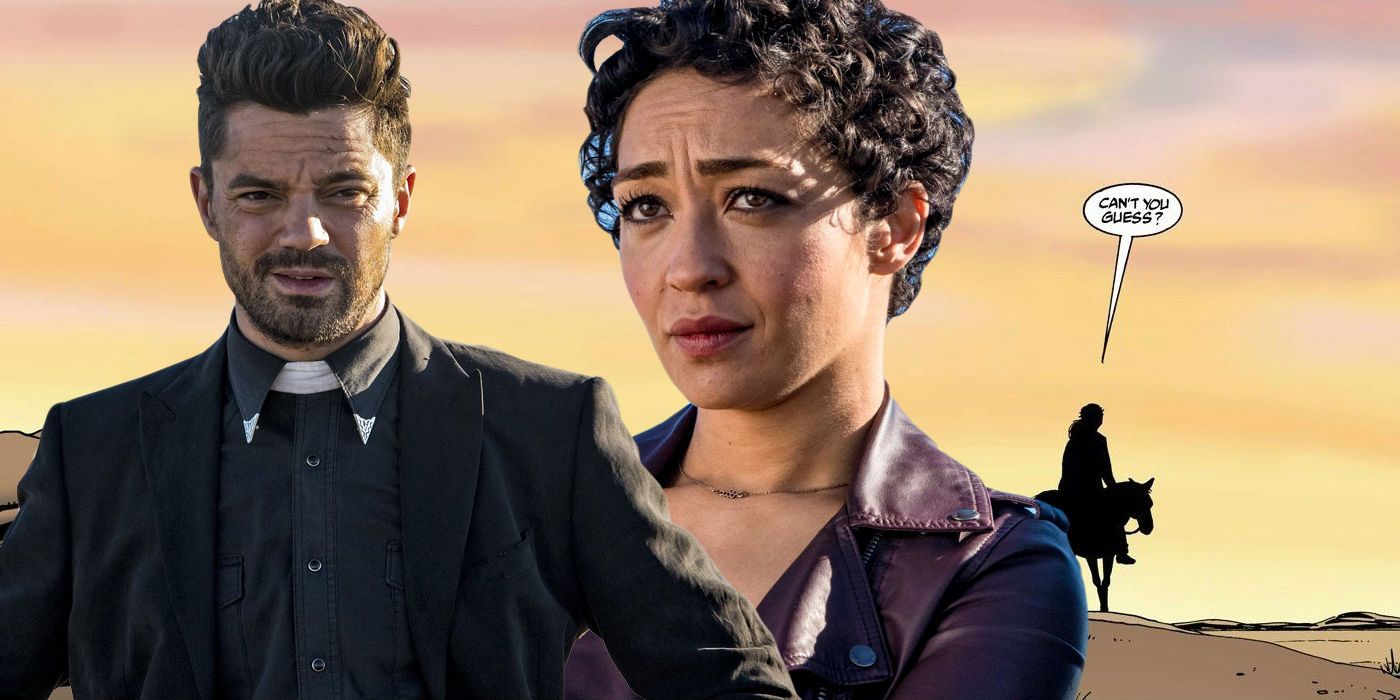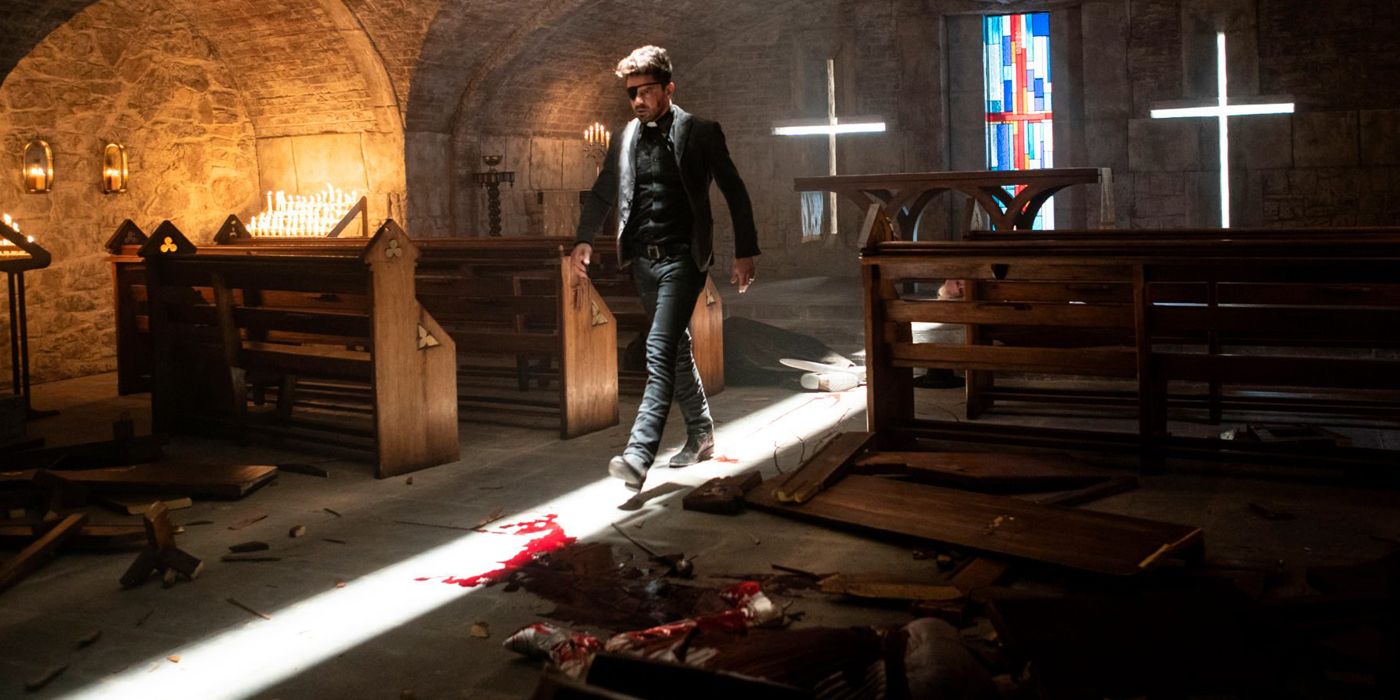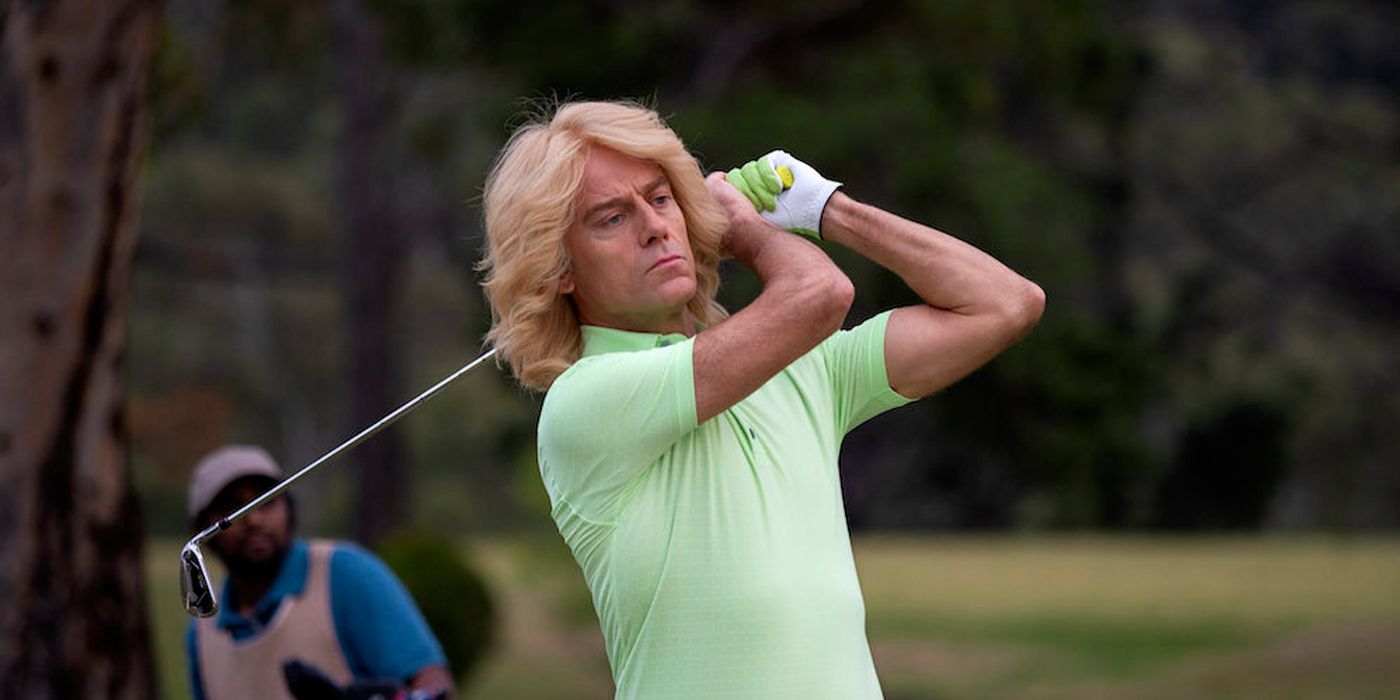Caution: Spoilers ahead for the final episode of Preacher.
Preacher's TV adaptation didn't end in exactly the same way as the original Garth Ennis and Steve Dillon comic book series. After 4 seasons of mayhem, AMC's Preacher has finally come to an end and, true to form, the closing episode was a conveyor belt of religious shocks, inappropriately funny gore and (semi) emotional goodbyes. With the world set to end on the first tap of Humperdoo's dance routine, only Jesse Custer, Tulip O'Hare and Cassidy stood in the way of God's plan to wipe the slate of humanity clean and replace it with a brand new creation. Facing off against the almighty forces of the Grail, and with the Saint of Killers always lurking, the odds were stacked against this battered and bruised trio as they raged against the holy machine one last time.
Preacher has always enjoyed an on/off relationship with its source material. The entire first season was comprised of a mostly fresh story that introduced the main characters and premise and played on plots from later in the source material. Only in season 2 did Preacher really begin to adapt the comic books in earnest. Since then, many of Garth Ennis' original arcs have featured in the Preacher TV show in some capacity, usually after a heavy reworking, but some stories have fallen by the wayside altogether.
In terms of a general direction, however, Preacher has broadly followed a similar path to the comic books and this loose approach continued in the series finale. Some elements of the original story were taken wholesale, some were included with significant modifications, and others were altered completely. Here are all of the similarities and differences between Preacher's TV and comic book endings.
Jesse, Tulip & Cassidy's Endings
After the incident with the Grail in Preacher's final episode, Jesse and Tulip go back to their high-adrenaline lifestyle, but balance their adventures with raising a child and running an auto shop alongside the motel owner they befriended previously. After Jesse's final encounter with God and his relinquishing of Genesis, the narrative jumps 40 years into the future when both Jesse and Tulip have died of old age. Their daughter stands by her parents' graves and is joined by Cassidy, who hasn't aged a day.
Clearly hurt from his experience with Tulip and his conflicting friendship and jealousy towards Jesse Custer, Cassidy reveals he never again met up with his old friends. Tulip and Jesse's daughter tells the vampire that her mother always loved him and would speak about him often. Touched by these words, Cassidy promptly leaves and commits suicide by walking into the sun.
The TV endings of all three characters are quite far removed from the original Preacher comic books. In the printed medium, Jesse's first death doesn't come from falling out of a plane, but from one of the soldiers under Herr Starr's command and this is also the moment Cassidy commits suicide by exposing himself to the sunlight. However, both preacher and vampire are resurrected thanks to a deal Cassidy made with God prior to being incinerated. After coming back to life, Jesse and Tulip share an emotional reunion and Cassidy regains his humanity, striking on his own and promising to become a better man. This is significant, since comic-Cassidy is a far darker character than his Joseph Gilgun counterpart.
The addition of Jesse and Tulip's daughter and Cassidy's permanent death are entirely unique to the Preacher TV series, although there is a suggestion that after the final chapter, the former vampire and his two pals go their separate ways, as was confirmed to be the case with the live-action characters.
The End Of The World
The end of Preacher's present-day story is wrapped up in surprisingly quick fashion. After Cassidy betrayed his friends and sided with God last week, the vampire gets into a bloody brawl with Tulip and eventually changes his mind once again, shooting Humperdoo and putting the Grail's plan to end the world to rest. Since God refuses to bring about the apocalypse without a Messiah, the day is saved. Jesse then addresses the assembled and disgruntled Grail members and uses his Genesis power to make them hunt down God, who has sneaked out the back door.
Two years later, Jesse receives news of God's whereabouts and tracks him to the Alamo. The pair have a discussion during which God reveals his true gripe with humanity: they don't love him in the same way he loves them. Realizing God has no intention of truly ending the world, Jesse tells his Lord that man will be better off without him. The story's hero then releases Genesis and walks away defiantly, safe in the knowledge that God is too needy and arrogant to kill off mankind.
Although the final confrontations in Preacher's comic and TV variations share some similarities, there are more than a few key differences. Foremost of all, the apocalypse isn't a major issue in Preacher's original finale. Herr Starr's main motivation in having Jesse shot is purely in revenge for the assorted disfigurements he suffered as a result of crossing the preacher, while God's primary concern is Jesse being in possession of Genesis. Jesse's aim in confronting God is more to do with "doing what he feels he has to do" rather than saving the world, tying into the imaginary John Wayne that the protagonist converses with in the comic books.
Nevertheless, some details are present in both versions of the Preacher tale. Cassidy does betray his friends but eventually comes good, and Jesse gives up his Genesis power in order to lure God back into Heaven to meet his judgement. The setting of both final showdowns is also the same, although instead of meeting God at the Alamo, Jesse and Cassidy are the ones who come to blows. As revealed in Preacher's TV finale, the God of the comic books is also motivated by a desire to be loved, but this drive is introduced a lot earlier and runs throughout much of the story.
Jesus, Arseface, Herr Starr And The Saint Of Killers
The stories of Preacher's supporting cast are wrapped up in a series of side stories and epilogues. Jesus kills Hitler, abandons his holy heritage and finds a job in a DIY store. Arseface becomes a internationally famous punk rock musician after finally giving up playing "Closing Time" and Herr Starr escapes to the refuge of a golf resort.
The Saint of Killers has by far the biggest moment in the Preacher finale, however, ultimately managing to get his long-awaited revenge on God. Jesse and the Saint hatched a plan back at Grail HQ, whereby the preacher would absolve the cowboy of his sins so that he might enter Heaven. The Saint would then await God's arrival and finish him off for good. After completing his mission, the Saint of Killers sits upon Heaven's throne.
While some of these character endings are derived directly from the Preacher comics, others are entirely new. Arseface does become a famous musician in the comics, but his downfall is also charted and poor Eugene ends up shoveling manure instead of playing to sold out crowds. Herr Starr is actually killed by Tulip in retaliation for Jesse being shot and Jesus Christ doesn't appear at all.
However, the scene involving God and the Saint of Killers is something lifted more or less directly out of Preacher's "Alamo" comic arc. Events play out in virtually the same fashion, with Jesse letting go of Genesis and expecting God to return to Heaven, having already arranged for the Saint to be waiting there. The cowboy fulfills his quest for revenge and slumps down on God's throne for a well-earned rest.




